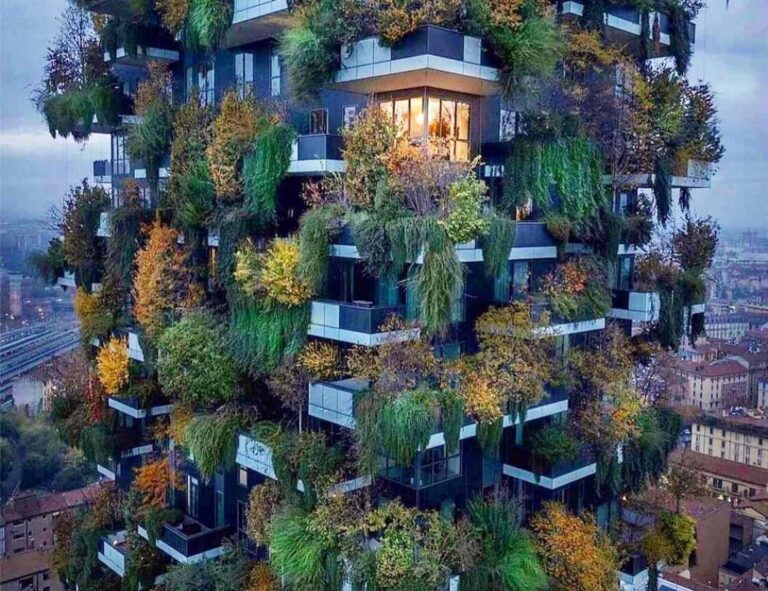The vertical forest is now a happy reality in many countries around the world, a breath of fresh air amidst concrete and urbanization. Buildings that enhance a new way of living. After the first one built in Milan, Italy, vertical forests are spreading all over the world.
People-friendly cities and urban regeneration are the basis of vertical forest design. But what is a vertical forest?
Table of Contents
What is a vertical forest
The vertical forest concept simply implies not giving up nature while living in a metropolis. It is, in fact, a reforestation project that through greenery, aims to increase plant biodiversity while contributing to the reduction of Co2 in the atmosphere.
Buildings are thus covered with plants and trees, creating the impression of a green lung in the middle of the city. A formula that appeals, given the very critical pollution issue in many cities around the world.
The best examples of vertical forests around the world
Here are most famous vertical woods and forests scattered around the world:
Milan Vertical Forest
The Vertical Forest in Milan is the first vertical forest worldwide, built in 2009. It is designed by archistar Stefano Boeri and was awarded as the most beautiful skyscraper in the world.
It is located in the Porta Nuova district and is a residential complex consisting of two towers with more than 2,000 tree essences.
Vertical forest in Utrecht
It is called the Hawthorn Tower and it is a next-generation vertical forest to redevelop the Jaarbeursboulevard area near Utrecht Station in the Netherlands.
The construction, which started in 2019, will include a 90-meter-high tower where Boeri will create a cohabitation experience between the city and nature. Ten thousand plants will be able to absorb about 5.4 tons of CO2.
Cedar Tower in Switzerland
Another famous vertical forest is the Cedar Tower in Lausanne, Switzerland. Standing 117 meters tall, the forest under construction will have 100 trees of four cedar species, 6,000 shrubs and 18,000 perennials, hanging and ground cover plants.
Thirty-six floors will be used for private residences but also offices, a gymnasium and a panoramic restaurant for the tower, which will have 80 percent evergreen trees.
Cedar trees, considered among the most majestic in the world, are capable of living as long as 2,500 years and able to adapt to extreme climatic conditions.
Nanjing vertical forest
Nanjing is home to China’s first Vertical Forest promoted by the Nanjing Yang Zi State-owned National Investment Group Co.ltd. Located in the Nanjing Pukou District, the two towers under construction will have balconies and green pools, modeled after Milan.
Along the facades, 600 large trees, 500 medium-cut trees, and more than 2,500 shrubs and drop plants will cover an area of 6 thousand sq. m. A true vertical forest that will help regenerate local biodiversity, reduce CO2 emissions by about 25 tons each year. Also, it will produce about 60 kg of oxygen per day.
Tao Zhu Yun Yuan Tower, Taiwan
The construction of the Vincent Callebaut-designed tower begun in 2013 and is located in Taipei’s XinYin district. 92 meters high, it promises to become the city’s main green architectural attraction.
Modeled after Boeri constructions, it will be a monumental spiral skyscraper covered with some 23,000 trees. Capable of absorbing about 130 tons of carbon dioxide each year.
Brussels Tours & Taxis
Also by Vincent Callebaut is the idea of creating a completely ecological neighborhood within the city of Brussels.
The Tour & Taxis is a former customs clearance center and symbol of Belgian industrialization. The architect wants to transform it into a state-of-the-art eco-neighborhood with vertical forests, sustainable buildings and co-working spaces.
The project covers an area of more than 135 thousand square meters. It involves the conversion of the Gare Maritime, a jewel into a campus of about 40 thousand square meters that will house open-plan offices, sports and dining spaces, and greenhouses.
Read also: Reimagining cities is crucial to stop climate change












